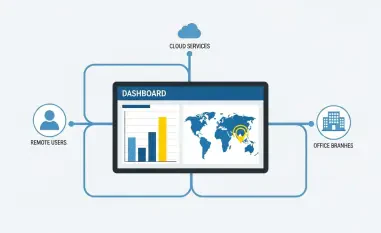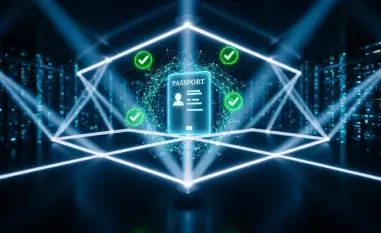The digital landscape of mobile communications has evolved dramatically with the introduction of eSIM technology, which eliminates the need for a physical SIM card. Instead, the details required to authenticate user devices on a mobile network are now embedded into the device itself, streamlining connectivity and enhancing the Internet of Things (IoT). However, as technology advances, so too do the opportunities for exploitation. There is increasing concern about eSIM vulnerabilities, particularly those pertaining to embedded Universal Integrated Circuit Cards (eUICC), which may allow unauthorized access to data. Security researchers have recently discovered that these compact circuits, central to eSIM functionality, may have hidden deficiencies that hackers could exploit to intercept communications or even clone profiles.
Delving into the Underlying Vulnerabilities
In a recent groundbreaking revelation, Security Explorations, a well-respected research lab, exposed vulnerabilities in eSIM technology. The investigation centered around the popular Kigen eUICC card, uncovering potential security breaches that could allow attackers to clone eSIM data effectively. This paves the way for unauthorized surveillance of a target’s mobile communication. Despite being classified as moderate risk by Kigen, the immediate response to mitigate any impact indicates the severity of this risk. The GSMA, a global association of mobile operators, swiftly issued directives to stakeholders in the telecom industry to address these vulnerabilities, highlighting the necessity for vigilant security measures.
Central to these vulnerabilities is the use of Oracle’s Java Card technology embedded in these circuits. The flaws within this technology were initially identified years ago but did not receive the attention they warranted, hence resurfacing recently as significant threats to eSIM security. This highlights a recurring theme in tech security, where outdated software imperfections gain new life when integrated into modern solutions. The security flaws show a growing challenge as dormant faults from older systems continue to haunt newer integrations, demanding swift action to secure these evolving infrastructures.
Exploiting the Security Flaws
The vulnerability of eSIM devices stems partially from the need for temporary physical access to initiate an attack, a deterrent that unfortunately proves inadequate once breached. Once attackers manage to extract the necessary cryptographic keys, subsequent exploits can transpire remotely, employing over-the-air techniques to install malicious applications on the Java Card. Consequently, further physical access becomes obsolete, compromising the ostensibly robust security of the chips. This breach enables attackers to access and siphon eSIM profile data remotely, facilitating potential interception by sophisticated entities, including nation-state hackers who can exploit these vulnerabilities for espionage purposes.
A practical demonstration of such an attack was executed, wherein the researchers successfully cloned an Orange Poland eSIM profile, redirecting calls and messages to a cloned device. Such exploits are not confined to a single network, and given the widespread adoption of eSIM technology, it is conceivable that other networks may similarly be susceptible. This poses serious implications across global markets, requiring comprehensive measures by telecom operators to safeguard their infrastructure against such threats.
The Industry’s Call to Secure the Future
The research further outlined how these vulnerabilities could lead to the creation of backdoors within eSIM chips, potentially going unnoticed by vendors and mobile operators. The risk escalates when considering the potential for permanent damage, as evidenced by several cards rendered inoperable during testing. Notably, the muted response from Oracle, the technology provider behind the Java Card, raises concerns. Acknowledging and addressing the foundational flaws from years past could potentially have mitigated the present risks in the eSIM ecosystem. This call to action underlines the responsibility of tech providers to adapt and respond to the dynamic landscape of cyber threats.
Security Explorations developed a specialized toolkit designed to aid in identifying vulnerabilities in eSIM environments, specifically targeting the Java Card VM. However, this tool is highly dependent on the unique configurations of different eUICC cards, necessitating customized adaptations for effective deployment. In an age where digital communication is paramount, prioritizing the security of mobile networks is crucial in protecting against emerging threats and vulnerabilities. As the telecommunications industry evolves, constant vigilance and proactive adaptation will be essential in mitigating risks.
Navigating a Secure Path Forward
Security Explorations, a reputable research lab, has recently unveiled significant vulnerabilities in eSIM technology, focusing particularly on the commonly used Kigen eUICC card. This discovery reveals potential security flaws that could enable hackers to clone eSIM data, thereby facilitating unauthorized monitoring of an individual’s mobile communications. Although Kigen has classified these vulnerabilities as moderate risk, their prompt efforts to mitigate any possible damage reflect the critical nature of the threat. In response, the GSMA, a global organization of mobile operators, quickly issued guidance to telecom industry stakeholders, underscoring the urgent need for robust security measures.
These security concerns largely stem from the use of Oracle’s Java Card technology within these circuits. The flaws in this technology were identified years ago yet failed to receive sufficient attention. Consequently, they have resurfaced as significant threats to eSIM security. This situation highlights a common issue in tech security, where flaws in outdated software can pose new risks when used in modern systems, emphasizing the necessity for ongoing vigilance and updates.













